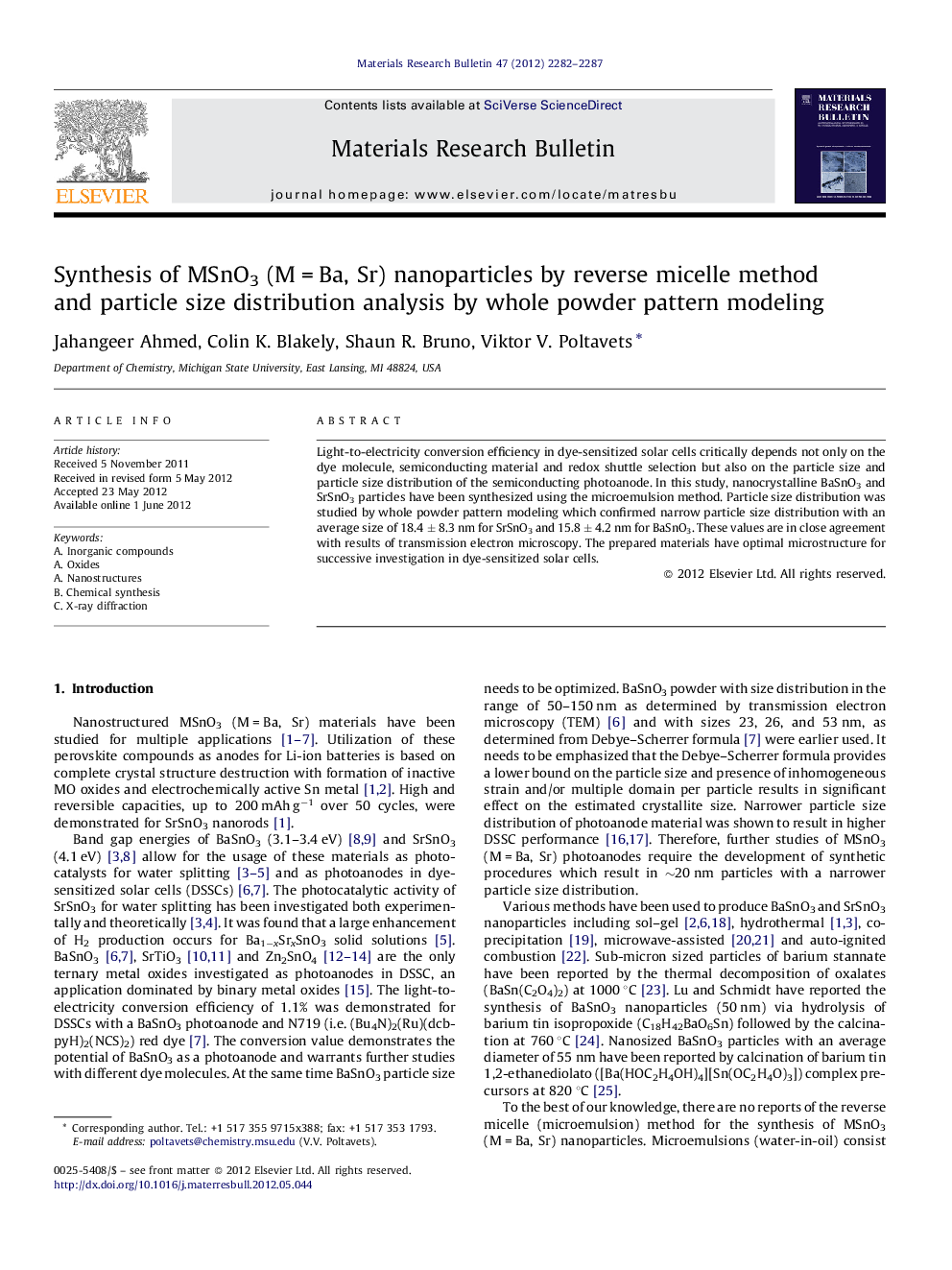| Article ID | Journal | Published Year | Pages | File Type |
|---|---|---|---|---|
| 1490366 | Materials Research Bulletin | 2012 | 6 Pages |
Light-to-electricity conversion efficiency in dye-sensitized solar cells critically depends not only on the dye molecule, semiconducting material and redox shuttle selection but also on the particle size and particle size distribution of the semiconducting photoanode. In this study, nanocrystalline BaSnO3 and SrSnO3 particles have been synthesized using the microemulsion method. Particle size distribution was studied by whole powder pattern modeling which confirmed narrow particle size distribution with an average size of 18.4 ± 8.3 nm for SrSnO3 and 15.8 ± 4.2 nm for BaSnO3. These values are in close agreement with results of transmission electron microscopy. The prepared materials have optimal microstructure for successive investigation in dye-sensitized solar cells.
Graphical abstractFigure optionsDownload full-size imageDownload as PowerPoint slideHighlights► BaSnO3 and SrSnO3 nanoparticles synthesized using the reverse micelle method. ► Particle size and size distribution studied by whole powder pattern modeling. ► Nanoparticles are of optimal size for investigation in dye-sensitized solar cells.
